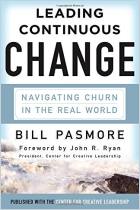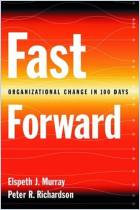
The Truth About Thriving in Change
Read or listen offline
Amazon KindleRecommendation
In business, change is constant. Yet many companies resist it or fail to prepare for it properly. To help remedy this problem, leadership consultant William S. Kane takes established “truths” about how to create meaningful corporate change and attempts to bolt them together in a leadership guide. How did he do? The author gets high marks for his extensive research and excellent sources, including numerous business bestsellers and high-profile contemporary studies of change management, corporate performance and productivity. Despite this hard work, the book tends to be very repetitive and breaks little new ground with its prescriptions: “Have a vision.” “Demonstrate commitment.” “Develop strategic objectives.” “Manage performance.” “Communicate clearly.” While such mileposts may be basic, getAbstract suggests that they will be quite useful to those who want a rundown on the tenets of change management.
Summary
About the Author
William S. Kane is a speaker, leadership consultant and business change expert. He worked with famous basketball coach John Wooden to develop and present leadership training seminars.

















Comment on this summary